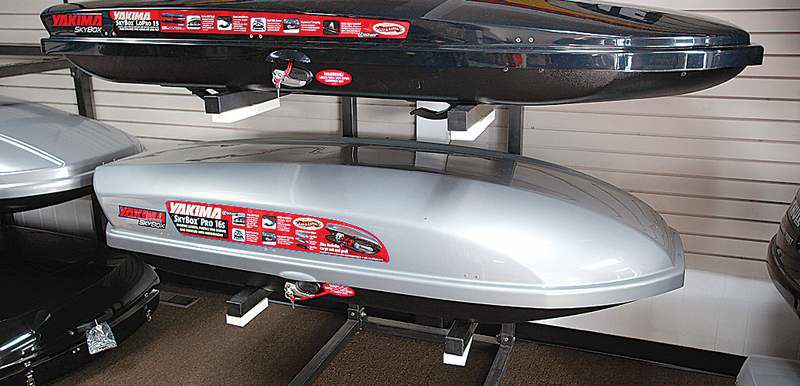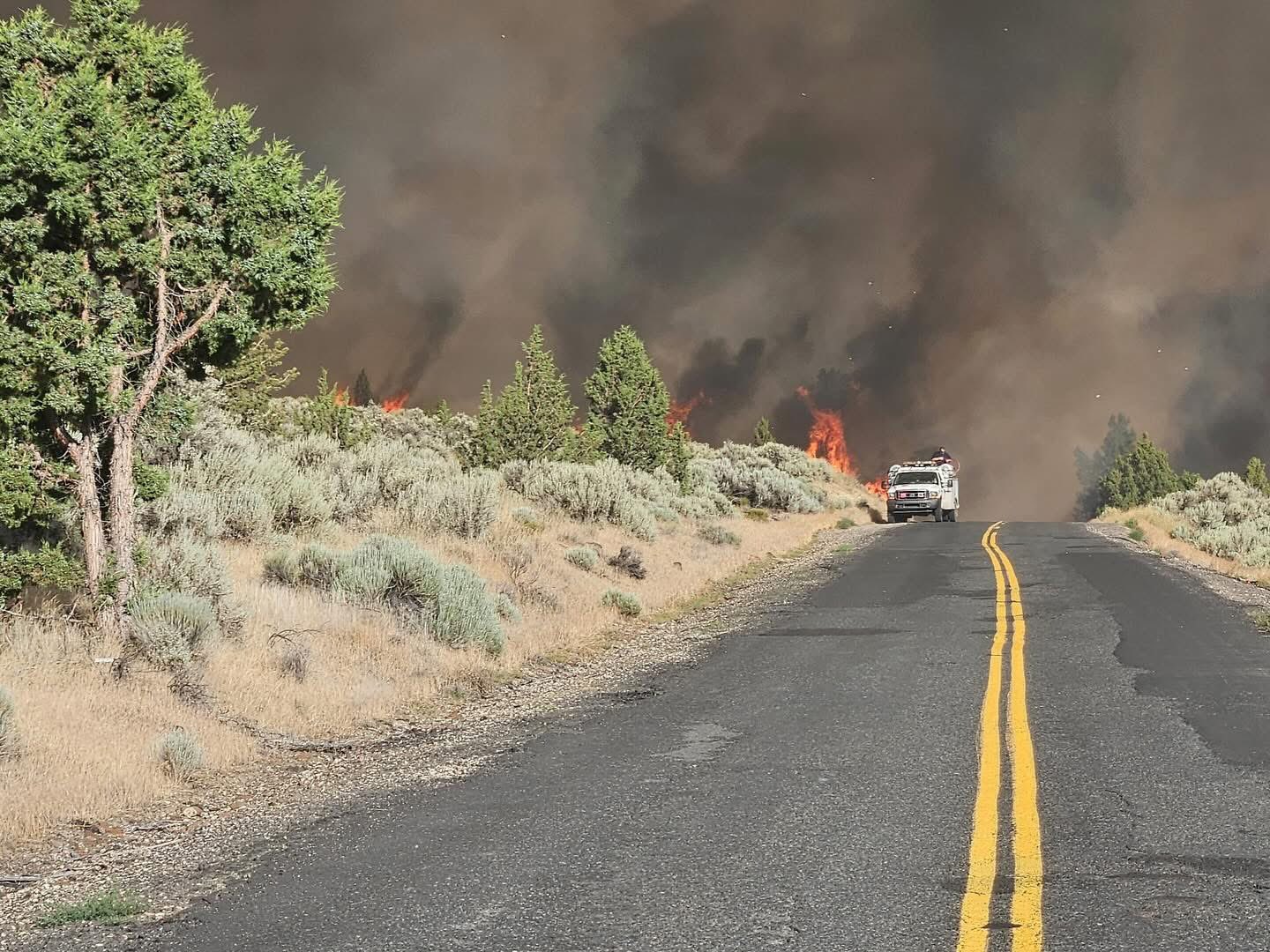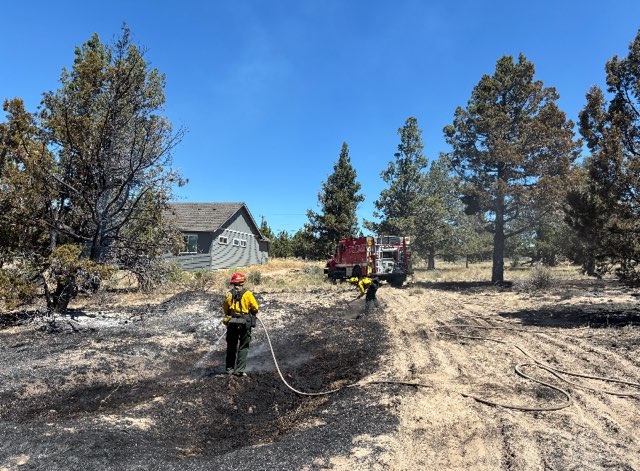Get the right rack
Published 5:00 am Wednesday, October 19, 2011

- Cargo boxes are exceedingly popular rack options due to their versatility. These two Yakima models, inside Hutch's Rack-NRoll in Bend, represent two styles of box. The top is specially designed to be aerodynamic.
Truman Taylor hears it all the time in sport-crazed Central Oregon.
Somebody decides to pick up a new outdoor sport and spends a bundle to buy the gear. Then they visit Taylor at Hutch’s Rack-N-Roll in Bend because they’ve forgotten one last critical piece: how to transport it all.
Trending
Some fortunate Central Oregonians really can ski, paddle or bike right out their back door. But by and large, outdoor play requires you to outfit your vehicle with a rack.
“There’s a zillion and one different sports in this town,” said Taylor, Rack-N-Roll’s store manager. “And there’s a way to take care of all of them with a rack.”
Just as with buying a bike or a new pair of skis, buying a rack can be an investment. Experts say you need to be prepared to spend at least $200 for the right system for your vehicle.
Yet they also say today’s vehicle racks come with more flexibility than ever before. One base rack with a variety of attachments often works for multiple sports.
Also, you’re more likely now to be able to transfer the rack to the next vehicle you buy. Businesses can usually help you find old parts or identify the new parts to make it work.
“Usually they’re very pleasantly surprised they can use their system on the new car, as long as they buy the new clips,” said Dave King, store manager for REI in Bend.
Trending
The other bit of good news is racks are long-lasting. Bo Grayzel, owner of Portland rack store ReRack, called the durability of the two leading rack manufacturers, Yakima and Thule, “fantastic.”
“I’ve never really seen a rack stop functioning when they’re on the vehicle they’re made for,” he said.
Begin with basics
Buying a rack perhaps doesn’t generate the thrill of getting those new skis. Yet Taylor said people don’t realize how often they use their racks or cargo boxes.
“Everything we sell in here is stuff people use every day,” he said.
So it’s worth it to put a little work into getting the best system for your vehicle.
For those just starting out, you will initially need a base rack. The cash outlay will vary based on whether your vehicle has a factory rack on the roof or is bare.
If it’s bare, you’ll need components that help connect the base rack. They can attach to the gutters along the sides of the roofs of older vehicles or to the contour of the roof for newer ones. This will make the base rack more expensive for a vehicle with a bare roof than one with a factory rack.
Next for your base rack are the four towers and the bars that run across the roof, secured by the towers.
The towers are the most expensive part of a rack system. Expect to put about $375 into a base rack, Grayzel said.
“The base rack is really the key,” Taylor said.
At this point you could strap a ladder down or haul plywood on top of your vehicle. But you still couldn’t put your bike or kayak up there with ease. That comes next and is more a la carte.
Yet once you have a base rack, you can buy new attachments or add a cargo box later. And, with luck, you have a rack that with the right adapters will fit on your next car.
Start shopping
Whether you’re buying new or trying to find a way to make an older rack work, the place to begin shopping is online.
Stores can provide the same sort of help, but starting with the research at home will give you a chance to think about what uses you want to accommodate and how that can possibly work on your vehicle.
Grayzel suggested going to the websites for Yakima and Thule, which will ask for vehicle information and guide you through a number of possibilities.
He also noted that the sites only tell customers about what the companies currently sell, not discontinued stock. So as you’re shopping, keep in mind it’s sometimes possible to find used parts and save money.
Next, stop by the shop. A variety of stores in Central Oregon carry rack supplies, from Rack-N-Roll to REI to Dick’s Sporting Goods. Some shops are willing to help you with installation depending on the amount spent, while others just sell the products.
Once shopping, it can be helpful to go to the shop and have a professional look at your vehicle. They can give you tips you perhaps wouldn’t have initially considered.
For instance, King said, manufacturer guidelines relate the minimum bar length needed for a particular vehicle. But a sales associate, upon learning that you hope to at times fit two canoes on top, might suggest getting longer bars that better accommodate that use.
Also, King said, they can better explain options for the base rack. Sometimes a model that is slightly more expensive might be worth it if it will fit both family vehicles or if it will more likely fit a new vehicle three to five years down the road.
Grayzel said for longevity’s sake, he recommends going with a well-known brand, such as Thule or Yakima. It will be easiest to find attachments and parts 10 or 20 years from now, he said.
“There are lots of their product in circulation in the Northwest,” he said.
The two businesses have also started making their attachments compatible with each other’s bars. Thule has rectangular bars, Yakima round. Some other rack companies make sure their parts work with the big two — Inno, for example, is compatible on Thule racks.
Grayzel also praised Yakima, a Beaverton-based company, as one that keeps a lot of parts in stock.
Rack possibilities
One of the biggest decisions you’ll make, depending on what you want to haul, is whether you want a rack on the roof or rear of the vehicle.
Roof racks tend to offer more multisport versatility. With the right attachments, they can handle boats or surfboards as well as snowboards and bikes.
They also suit cargo boxes, which Taylor said customers love once they have one. People use them for luggage, camping equipment, fishing gear and skis and snowboards.
“People always say, ‘I spent this much on the small one. I wish I got the bigger one,’” he said.
King noted that roof racks and cargo boxes better protect gear from the elements, compared to a rack that attaches on the back of the vehicle.
“The one drawback with a rear-mount is you’re getting the spray on your bike or skis,” he said.
Yet rear racks also offer some advantages. Taylor said he uses a rear rack for bikes when he’s off for a weekend adventure: He can load the bikes on back, the camping gear in the cargo box on one side of the roof rack and the kayak on the other side.
There are a variety of rear racks, including ones that attach to the hitch, the spare tire or the trunk.
King said a significant plus is for customers who don’t want to lift their bikes too high. They appreciate the ease of the rear rack.
Also, some rear racks can carry skis or snowboards in the winter with the right attachments.
Taylor cautioned shoppers should just make sure their vehicle has the ground clearance for a rear rack. Otherwise those skis or bikes might at some point scrape the ground. Another con is it often interferes with access to the trunk or rear interior access to the vehicle.
Additional options
For those looking to save some money, a used rack might be a good option.
But you need to know exactly what you’re looking for, lest you spend money on something that will not fit your car.
“The experience I’ve had … is if you pick up something at a garage sale, it’s probably not going to fit on the vehicle,” Grayzel said.
Look up the exact model you need before trolling secondhand sports stores or garage sales. Grayzel said it’s even helpful to find that model on Google Images and bring it with you, either on paper or by smartphone, to compare.
He also said to be attentive when purchasing parts online from a nonauthorized dealer.
“I see it all the time on Craigslist,” Grayzel said. “They say it’s the current generation Yakima tower, and it’s the previous generation.”
Grayzel’s Portland business, ReRack, specializes in used racks and parts. It also carries new merchandise, as some newer vehicles necessitate newer racks.
He added that ReRack encourages customers to email ahead so staff can research and find parts ahead of time (requests@rerackpdx.com).
Taylor at Rack-N-Roll also said he has a stock in back for helping customers fit older racks.
Racks are built to last and require a minimal amount of care. Salt on winter roads or from sea air can corrode racks, but otherwise Taylor said avoid going through the car wash and wipe the mud off once in awhile and the rack should be fine.
“I think they’ll probably outlast most vehicles if you take care of them,” he said.








